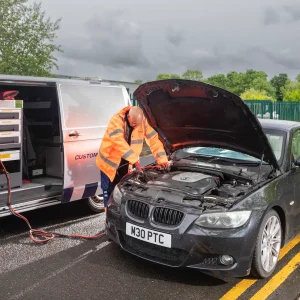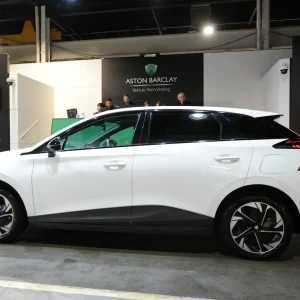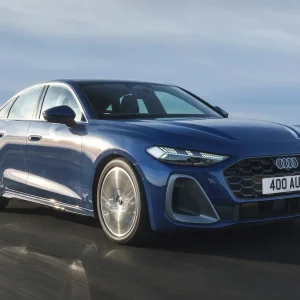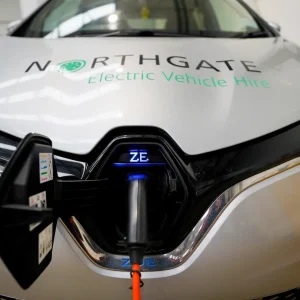To the untrained eye, using software to monitor your fleet may seem like a case of information overload at first, but the savings various systems can produce can be astronomical if used correctly.
On the face of it, fleet software may seem scary, with the reams of information coming in akin to tracking a flight to the moon and not the few hundred or thousand vehicles on your books.
You may not know where to start, but according to David Gladding, global sales and marketing director at Chevin Fleet Solutions, the trick is to work out what you want to get out of the software before rushing into monitoring people and cars blindly.
“I think businesses need to make up their mind what they want to get out of their fleet when purchasing software,” he said at BusinessCar’s first roundtable event in London, held in association with the fleet software provider on how businesses can save money using data. “The cost of fleet management software is just a drop in the water compared with the cost of running the fleet.”
He claimed his company “took 800 man-hours a month out of a schedule” of a business that had an eight-month payback from a “near-million pound” proposal, while another customer was spending £30 a vehicle on forms a day to check the roadworthiness of their 300-strong fleet.
“The real benefits of a good software programme is to look at all the vehicles and ask ‘is that fit for purpose?’ That’s the holy grail of software, which can look at two vehicles doing the same thing and say ‘this one is much better than that one over there,” he added.
“Data used to be seen as a threat, now it’s seen as a friend,” he said. “Once people see things mapped out, they can see the benefits.”
The right data for you
Less can often mean more in terms of fleet data, as Bob Sanders, transport manager at charity Barnardo’s, made it clear that he uses data to control expenses and improve his fleet’s compliance. However, getting the buy-in was a struggle: “From a charity’s perspective, it’s very difficult to bring anything new in as it’s very hard to prove it will save us money.”
Karl Fisher, operations director at APD Global Research, added that people “are so time-poor that most of the time they don’t want all the data, they just want to know how to solve problems”.
“People want systems which will say ‘these two drivers are costing 60% of the rest, go sort out that problem,” Sanders continued.
He explained the advantage of using data was the autonomy it gave him, as software can pick out problematic drivers automatically: “You can’t rely on every driver 24/7 – you need software to say ‘go and deal with this person’.”
Gladding added that data can also be used to keep a brand’s image intact: “The value of the brand is that great that you can’t afford to let anything go wrong, whether that’s a cost to the business through courts or something that gets out that shouldn’t.”
The RAC’s head of products and proposition, Alan Beveridge, agreed: “If one of our orange vans did something wrong and the story came out it would damage our reputation massively.”
But who owns this data?
The thorny issue of who owns what data cropped up within no time at all among our panel, with all delegates agreeing the problem is going to become more apparent in the future as vehicles become more and more clever.
“How data is captured and reported is going to change. It’s all about telematics, and what it can tell you. What you can capture from the car is going to be a big thing in the future,” said APD’s Fisher.
“Eventually someone is going to turn around and ask ‘who owns this?'” Gladding said. “You’ve got OEMs, telematics companies and HR.”
The RAC’s Beveridge suggested fleets may be receptive to the idea of sharing data if there are tangible benefits, akin to how search engines offer internet users better results based on browser history. “If you tell Google some information about yourself, they will tell you stuff near you and that’s okay because it’s useful,” he said. “It’s the same thing with fleets. If people get something back, they’ll be happy with that – such as performance improvements.”
He added that data-sharing should have an opt-in function though: “People should have the choice of whether or not information is shared. As a grey fleet driver, I’m happy with my journeys being recorded because I can press a button to expense them quickly.”
Sanders, however, steers well away from data protection risks and limits trackers to vulnerable vehicles and refuses to place them on grey fleet cars. “It’s very limited who sees our data. We put trackers in vans and minibuses five years ago to stop people from stealing things, but the vehicles also record mileage,” he said. “In terms of putting trackers on vehicles, I don’t put them on cars which are used for business and personal mileage.”
Driver training
While some employees may not be keen to have their movements monitored by their bosses, Gladding cited an example where the mere hint of telling people they would be tracked improved their driving habits.
“A customer said they would put trackers in 12,000 vehicles and within three months, a 12% fuel saving was made, although the trackers weren’t switched on. They then said they would be switching them on, and a further 6% saving was recorded,” Gladding said.
A carrot-and-stick approach to telematics data is advocated by the RAC’s Beveridge, as proven with his own fleet of vehicles. “Before we gave people it [a league table of the most efficient drivers], they said ‘what’s the point?’, but afterwards all they could talk about was their score.”
He conceded, though, that sending everyone on driver training courses may not be the most effective way to cut costs: “You don’t need to train every driver to be a good driver, you just need to train the worst drivers to become better.”
But he added that data can be used as a staff-retention tool: “We’ve got companies who have put in software to reduce speeding because all of their best sales guys were on six or nine points on their licence and they didn’t want to lose them.”
He also cited an example where a client saw a 60% reduction in their accident rate after introducing what he called small financial bonuses to careful drivers every month.
The changing state of fleet
Gladding said the role of fleet software has changed dramatically over the last few years – from the departments involved, the vehicles being monitored and the software itself to the boom in mobile applications.
“Seven years ago, fleet software was driven by the manager, and the system was built around that person’s requirements and was very inward-looking,” he said. “Now, though, other stakeholders are brought in when buying software. There’s a definite shift.”
Fleet software is also going mobile, and he added there’s a “great deal to be had with mobile applications”, as they can be used to control expenses, conduct vehicle inspections and more besides, although Sanders is less enthusiastic about the shift to smartphones: “We don’t supply people with mobile phones, so we can’t tell people to download an application to help us out, and we can’t go out and buy everyone an iPhone 7 to help us track their mileage.”
And it isn’t just the software itself that has changed, it’s the customer’s perspective on how they expect things to just work out of the box, as Beveridge explained: “People don’t expect to learn things, they expect to be able to use it. There’s an expectation that data should be easy to understand, rather than ‘here’s a bunch of data and here’s a six-week training course to help you understand it.”





